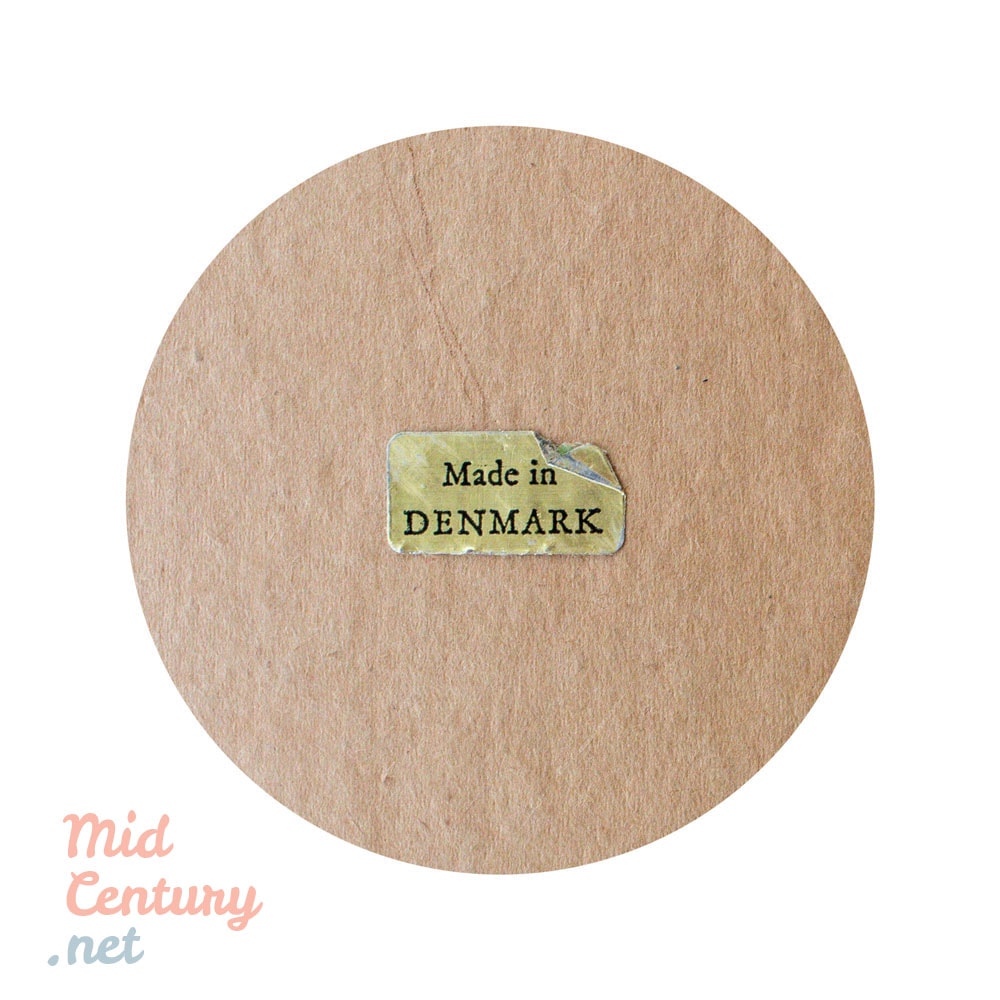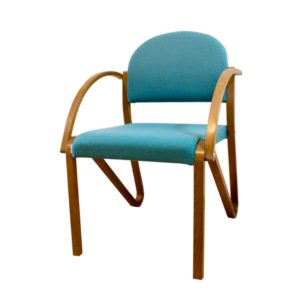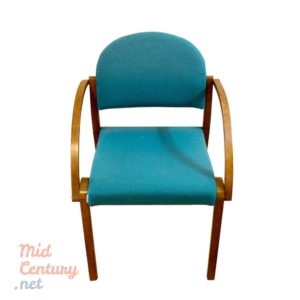Round wall mirror, Denmark, 1970s
100 €
Beautiful round wall mirror made in the 1970s in Denmark. It features a joyful red plastic frame and a leather strap. The piece is kept in good vintage condition and has its original “Made in Denmark” on the back.
Out of stock
You may also like
-
Sold out
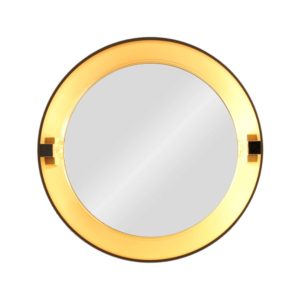
Allibert round wall mirror, France, 1970s
Sold ItemsAllibert rotating/adjustable mirror with a cream plastic frame, made in the 1970s in Belgium. The mirror has its own lights (4 sockets; light radiates from behind the mirror) and an outlet that can be used for a hair dryer or other electrical appliances. The item was designed for the bathroom but it looks equally as stylish in the living room or hallway. It can also be used for low level lighting within the room. The piece is kept in good vintage condition.175 € -
Sold out
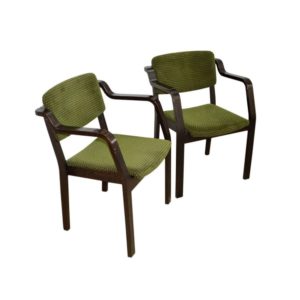
Pair of Gemla Möbler chairs made in Sweeden, in the 1980
Sold ItemsPair of Swedish Gemla Mobler chairs. The structure and the armrests - made of curved wood - give a natural, organic and pleasant shape. This is completed in a beautiful way by the wool upholstery, in a shade of green that is specific for the Mid-Century furniture. This chairs can fit any nice interior, having the ability to create a warm atmosphere in the room. The chairs are in very good shape with only few age-related traces. At Helge River in Diö, in the heart of the old forests of Småland, lies Sweden's oldest furniture factory (founded in 1861). Its inner sanctum, beech and ash are tamed into time- less furniture by skilled craftsmen who know which way the wood likes to bend. Stretching and flexing, easing and teasing, until the steaming hot wood finds its form. And the wood will not be rushed. The transformation from log into chair takes days, sometimes even weeks. The technique has been used by boat and fence builders since ancient times but was refined in the mid 1800's by Thonet into the iconic chair, worn my millions of seats in the cafés of Europe. The shape is determined by the best and the brightest of their time. Back then their names were Peter Celsing, Yngve Ekström, Sigurd Lewerentz and Carl Malmsten. Now they are Jonas Bohlin, Front, Lisa Hilland and Mats Theselius.150 €
Additional information
| Design Period | 1970-1979 |
|---|---|
| Country of Origin | |
| Identifying Marks | Labeled by Maker |
| Material(s) | |
| Color(s) | |
| Weight | Approx. 1 kg |
| Dimensions (H x W x D) | 40 x 40 x 4,5 cm |
| Duties Notice | If your delivery address is not in the European Union, Iceland, Liechtenstein, Norway, or Switzerland, please be advised that import duty is not included in the prices you see online |
Product Enquiry
About Mid-Century
A mirror is an object that reflects light in such a way that, for incident light in some range of wavelengths, the reflected light preserves many or most of the detailed physical characteristics of the original light. This is different from other light-reflecting objects that do not preserve much of the original wave signal other than color and diffuse reflected light.
The most familiar type of mirror is the plane mirror, which has a flat screen surface. Curved mirrors are also used, to produce magnified or diminished images or focus light or simply distort the reflected image.
Mirrors are commonly used for personal grooming or admiring oneself (where they are also called looking-glasses), decoration, and architecture. Mirrors are also used in scientific apparatus such as telescopes and lasers, cameras, and industrial machinery. Most mirrors are designed for visible light; however, mirrors designed for other wavelengths of electromagnetic radiation are also used.
The first mirrors used by people were most likely pools of dark, still water, or water collected in a primitive vessel of some sort. The requirements for making a good mirror are a surface with a very high degree of flatness (preferably but not necessarily with high reflectivity), and a surface roughness smaller than the wavelength of the light. The earliest manufactured mirrors were pieces of polished stone such as obsidian, a naturally occurring volcanic glass. Examples of obsidian mirrors found in Anatolia (modern-day Turkey) have been dated to around 6000 BC. Mirrors of polished copper were crafted in Mesopotamia from 4000 BC, and in ancient Egypt from around 3000 BC. Polished stone mirrors from Central and South America date from around 2000 BC onwards. In China, bronze mirrors were manufactured from around 2000 BC, some of the earliest bronze and copper examples being produced by the Qijia culture. Mirrors made of other metal mixtures (alloys) such as copper and tin speculum metal may have also been produced in China and India. Mirrors of speculum metal or any precious metal were hard to produce and were only owned by the wealthy. These stone and metal mirrors could be made in very large sizes, but were difficult to polish and get perfectly flat; a process that became more difficult with increased size; so they often produced warped or blurred images. Stone mirrors often had poor reflectivity compared to metals, yet metals scratch or tarnish easily, so they frequently needed polishing. Depending upon the color, both often yielded reflections with poor color rendering.[6] The poor image quality of ancient mirrors explains 1 Corinthians 13’s reference to seeing “as in a mirror, darkly.”




